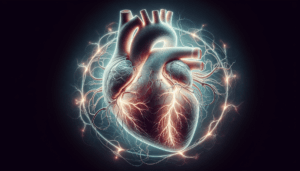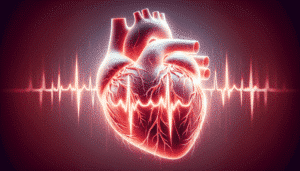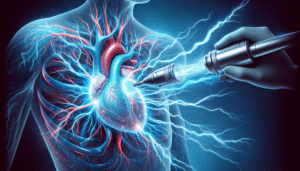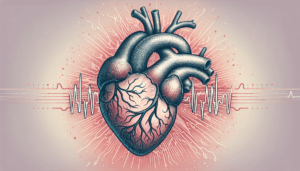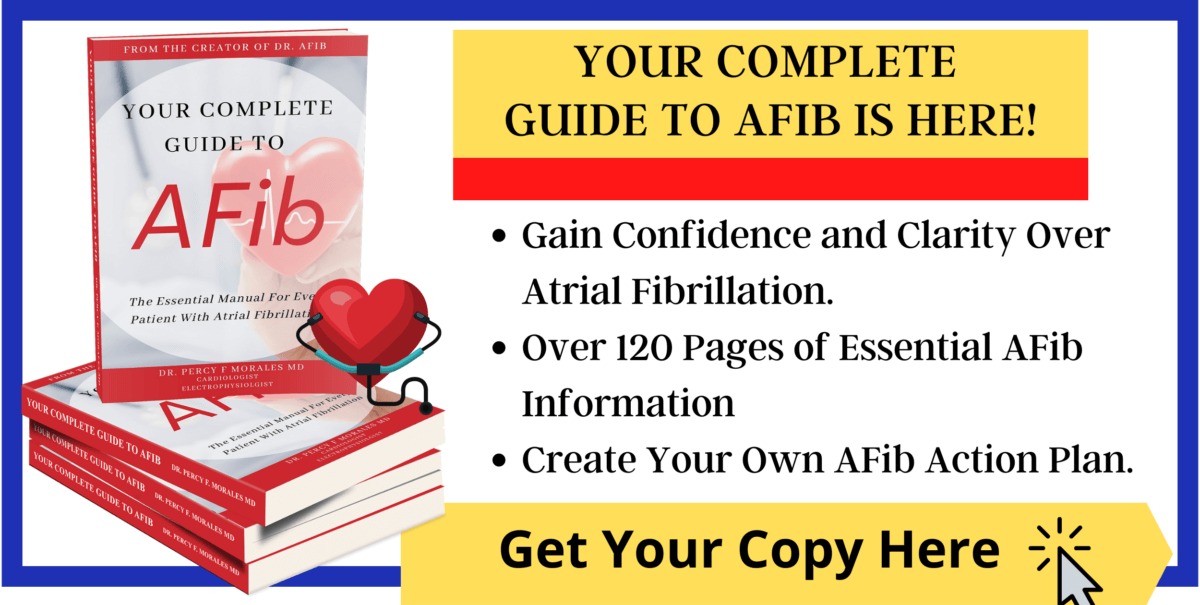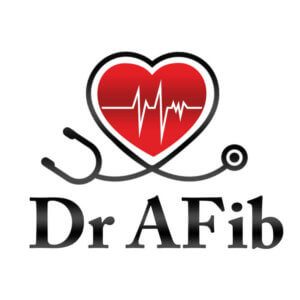Are you exploring options for managing atrial fibrillation? The cardioversion procedure for AFib might be a key consideration. This procedure involves delivering a targeted electric shock to the heart with the goal of restoring normal rhythm. This article will give you insights into how cardioversion procedure works, what preparations are needed, and how it fits into the larger picture of AFib management—equipping you with the knowledge you need to make informed health decisions.
Key Takeaways
- Cardioversion is a noninvasive procedure used to treat arrhythmias like atrial fibrillation (AFib), using either electrical shocks or medications to restore normal heart rhythm, with success rates ranging from 70% to higher, depending on several factors.
- Preprocedural preparation is crucial, frequently involving heart imaging to check for blood clots and personalized anticoagulation therapy to reduce the risk of stroke or other complications during and after the procedure.
- Long-term success post-cardioversion necessitates a heart-healthy lifestyle and adherence to medication regimens, particularly anticoagulants, to minimize the chances of AFib recurrence and prevent potential complications.
Navigating Cardioversion Procedure for Atrial Fibrillation
Entering the world of cardioversion for atrial fibrillation (AFib) can feel like finding your way through a complex maze—one where the pathways to restoring a heart’s normal rhythm are intricate yet attainable. Electrical cardioversion, a treatment option for some patients with atrial fibrillation, is a procedure designed to shock the heart back into a normal beat. This medical intervention is not just about sending a high-energy jolt; it’s about understanding the heart’s language, resetting its erratic signals, and restoring normal heart rhythm.
Regardless of whether it’s an urgent case of AFib requiring immediate attention, or it’s a planned procedure to manage recurrent persistant atrial fibrillation, the heart rhythm society acknowledges electric cardioversion, also known as external electrical cardioversion, as a vital tool. However, the efficacy of this shock therapy hinges on several factors, such as a patient’s weight and electrode position—variables that can influence the heart’s receptivity to regaining its natural tempo.
What Is a Cardioversion Procedure?
At its core, a cardioversion is a therapeutic procedure intended to treat various arrhythmias, including atrial fibrillation, SVT, and ventricular tachycardia, conditions that disrupt the heart’s natural rhythm and pose a threat to life’s delicate balance.
The two primary forms of this rhythm-restoring technique are electrical cardioversion, which deploys a controlled electric shock, and chemical cardioversion, utilizing medications to coax the heart back to a steady beat.
Direct current cardioversion, a specific form of electrical cardioversion, stands as the more prevalent choice for rectifying arrhythmias like AFib due to its higher success rates. It delivers a synchronized shock, a controlled and precise electrical charge, to correct an abnormal heart rhythm. Commonly used energy setting for a cardioversion shock range from 100-360 Joules.
In contrast, chemical cardioversion, while a viable option, is generally considered less effective and is less commonly utilized. This pharmacological approach uses anti-arrhythmic medications, such as amiodarone, flecainide, or propafenone, to chemically coax the heart back into a normal rhythm. However, due to its lower success rate compared to electrical cardioversion, chemical cardioversion is often reserved for specific clinical scenarios where direct current cardioversion is not suitable or has been declined by the patient.
Differentiating AFib and Atrial Flutter
Atrial fibrillation and atrial flutter, though similar in their chaotic impact on heart rhythm, dance to different beats. AFib is characterized by a rapid, disorganized electrical storm, disrupting the heart’s normal cadence and causing an irregular rhythm that can be felt as a quiver or flutter in the chest. Atrial flutter, by contrast, is a more rhythmic disturbance, a circuit of electrical impulses that cycle in an orderly fashion, typically within the heart’s upper right chamber.
Understanding the subtleties between these two arrhythmias is vital, as it guides the approach to cardioversion, the choice of antiarrhythmic agents, and the long-term management of patients with these abnormal heart rhythms. However, a cardioversion procedure can be a treatment option for either atrial fibrillation or atrial flutter.
Read more details about atrial flutter here.
Pre-Procedure Considerations for AFib Patients

Before beginning the journey to restore heart rhythm, patients with atrial fibrillation commonly undergo preprocedure testing and planning. The quest for a successful cardioversion is predicated on a meticulous evaluation of the heart’s condition and a strategic defense against potential threats. One such threat is the presence of blood clots, which can lurk within the heart’s chambers and pose the main risk for complications if dislodged during cardioversion.
A transesophageal echocardiogram, a form of heart imaging, is commonly use to scan for clots and ensuring the coast is clear for the procedure to proceed safely. Yet, the discovery of a blood clot is not the end of the road; it merely calls for a detour, a period of anticoagulation therapy that can span several weeks to ensure the blood clot has dissolved.
For those whose encounter with AFib is brief, lasting less than 48 hours, the wait for cardioversion may be shortened, allowing for an accelerated return to normal rhythm with a reduced pre-procedure anticoagulation period.
Risk Assessment for Blood Clots
The threat of blood clots casts a significant shadow over the safety of a cardioversion porcedure, necessitating a thorough risk assessment. When atrial fibrillation extends beyond the 48-hour mark, the floodgates for clot formation open wider, prompting the need for a protective shield of anticoagulant therapy. Discovering a clot within the heart’s walls imposes a mandatory waiting period, a span of 4 weeks where blood thinners serve as the main treatment.
Yet, when the urgency of restoring rhythm is paramount, advanced imaging techniques like the transesophageal echocardiogram (TEE) can expedite the process, providing a rapid assessment for the presence of clots and allowing a swifter intervention without the lengthy prelude of anticoagulants
Evaluating for Blood Clots
The transesophageal echocardiogram serves as an essential ally in the pre-procedure evaluation. This imaging test, an essential step before cardioversion, carefully evaluates the heart for the presence of clots, the silent saboteurs that could spell disaster if not detected and managed properly. The echocardiogram’s role transcends mere detection; it is a critical safeguard, a means to ensure that the path to restoring normal rhythm is clear of obstructions that could precipitate serious complications such as stroke.
This pre-procedure vigilance sets the stage for a safe and effective cardioversion, offering patients the best chance to reclaim the steady rhythm that is the hallmark of a healthy heart.
The Cardioversion Process: Step by Step

The day of the cardioversion procedure marks a key moment in the plan to correct the heart’s abnormal rhythm. It is a process steeped in precision, usually carried out in a hospital setting where each step is choreographed to ensure the heart’s safe return to its natural rhythm. The procedure itself is brief, a matter of minutes, yet within this window, a carefully calibrated shock is delivered to the heart through specialized pads, with the patient in a restful slumber induced by IV medication. The success of this intervention is not left to chance, with success rates usually over 70%, reflecting the meticulous planning and execution that underpin this medical marvel.
Once the procedure concludes, patients typically depart the hospital on the same day, embarking on the next phase of their journey toward sustained heart health.
On the Day of the Procedure
The day of the cardioversion day arrives with a set of instructions designed to prepare the patient for the procedure. A fast commencing at midnight ensures an empty stage for the procedure to unfold, with an approximate fasting period of 8 hours. Patients engage in a dialogue with their healthcare provider to fine-tune their medication regimen, with particular attention to directives for blood thinners and diabetes medications on the cardioversion procedure day.
Attire is kept simple, a one-day supply of prescription medications is packed, and a comprehensive list of all medications accompanies the patient, setting the stage for a smooth and informed procedure.
During the Procedure
As the patient settles into the procedural suite, the cardioversion machine stands ready to deliver its restorative shock to the heart. An common initial energy of 200 Joules, recommended for stubborn cases of atrial fibrillation, is poised to penetrate the heart’s defenses and reestablish a normal rhythm. The electrodes, adhered in the optimal anteroposterior position, are the conduits through which the shock will course, seeking to synchronize the heart’s erratic electrical signals. Most cardioversion machines cann deliver up to a maximum of 360 Joules for a single shock.
Sedation brings a peaceful slumber, allowing the patient to remain unaware of the brief, yet profound, transformation occurring within their chest as the shock is administered. This moment, though fleeting, holds the potential to mark a turning point in the patient’s journey with atrial fibrillation.
Post-Procedure Monitoring and Care
After the cardioversion, the patient enters a period of vigilant observation. The post-procedure hours are critical, a time when the healthcare team watches for signs of complications with an eagle’s eye.
The patient’s autonomy returns gradually, with driving off-limits for the first 24 hours following the procedure, a precaution to ensure full recovery from the sedation and the shock’s effects. This post-procedure monitoring is as much a part of the cardioversion process as the shock itself, a safeguard designed to catch any ripples of disturbance before they can escalate into waves.
Strategies to Enhance Cardioversion Success
In the quest for successful cardioversion, certain strategies can tip the scales toward a more favorable outcome. The type of waveform used during the procedure, for instance, plays a critical role in its success; biphasic waveforms have emerged as a more effective option compared to their monophasic counterparts. For patients who have previously encountered resistance to conventional cardioversion, a high-energy approach using quadruple pads can significantly boost the chances of restoring sinus rhythm.
However, even with a successful procedure, the specter of recurrence looms, with over half of patients experiencing a return of AFib, often within the first few days post-cardioversion.
Biphasic vs. Monophasic Waveforms

The dichotomy between biphasic and monophasic waveforms is a tale of efficiency and effectiveness.
Biphasic waveforms, with their two-directional flow of current, offer several advantages over monophasic waveforms:
- They nearly double the initial success of cardioversion
- They offer a cumulative advantage of approximately 10% over monophasic waveforms
- Despite variations in the specific types of biphasic waveforms and electrode polarities, the success rates remain consistently high, underscoring the robustness of biphasic technology in the face of electrical cardioversion’s challenges.
This wave of innovation in defibrillator technology has set a new standard, one that optimizes the shock efficacy and offers patients a greater chance at a sustained normal rhythm. In general, biphasic waveforms are the standard of care these days for a cardioversion procedure.
Role of Antiarrhythmic Medication
The arsenal of strategies for enhancing cardioversion success extends beyond the electrical realm into the pharmacologic domain. Antiarrhythmic drugs, particularly those in Class III, can fortify the heart against the forces of arrhythmia both before and after the shock is delivered, significantly improving the success rate of restoring sinus rhythm. Medications like amiodarone, sotalol, and ibutilide serve as allies in this battle, prolonging atrial refractory periods, suppressing extraneous electrical activity, and thereby lowering the threshold for successful cardioversion.
Impact of Obesity on Cardioversion Success Rates
Obesity is a significant factor that can influence the success rates of cardioversion procedures. In patients with a higher body mass index (BMI), the distance between the skin and the heart increases, which can dampen the effectiveness of the electrical shock delivered during the procedure. As a result, obese patients often require a higher energy setting to achieve the same level of current penetration to the heart as those with a lower BMI.
This necessity for higher energy levels stems from the extra adipose tissue that acts as an insulator, reducing the conductivity of the electrical shock. Consequently, healthcare providers may need to adjust their approach when performing cardioversion on obese patients, often starting at a higher joule setting than the standard initial energy level used for patients of a normal weight.
Furthermore, the presence of obesity can complicate electrode placement, making it crucial to ensure optimal positioning to maximize the effectiveness of the shock. The anteroposterior placement of the pads may be adjusted to accommodate the increased chest size, and in some cases, alternative pad placements, such as the anterior-lateral position, may be considered.
The challenges posed by obesity in cardioversion procedures highlight the importance of a tailored approach to each patient’s unique physical characteristics. It also underscores the need for ongoing research and adaptation of cardioversion techniques to ensure the highest possible success rates for all patients, regardless of body size.
Post-Cardioversion Lifestyle and Medication Management
The aftermath of cardioversion is a pivotal time for patients, a period when the maintenance of heart health takes center stage. Lifestyle choices and medication adherence become the cornerstones of a strategy designed to prevent the recurrence of atrial fibrillation. Factors such as:
- smoking cessation
- hypertension management
- alcohol moderation
- sleep apnea treatment
- diabetes control
play instrumental roles in this post-procedural cardioversion success, each contributing to the stability and harmony of the heart’s rhythm.
Strict medication management, particularly with anticoagulants and antiarrhythmic agents, forms an integral part of this post-cardioversion regimen, acting as custodians of the heart’s newfound rhythm and warding off future episodes of AFib.
Blood Thinning Medications
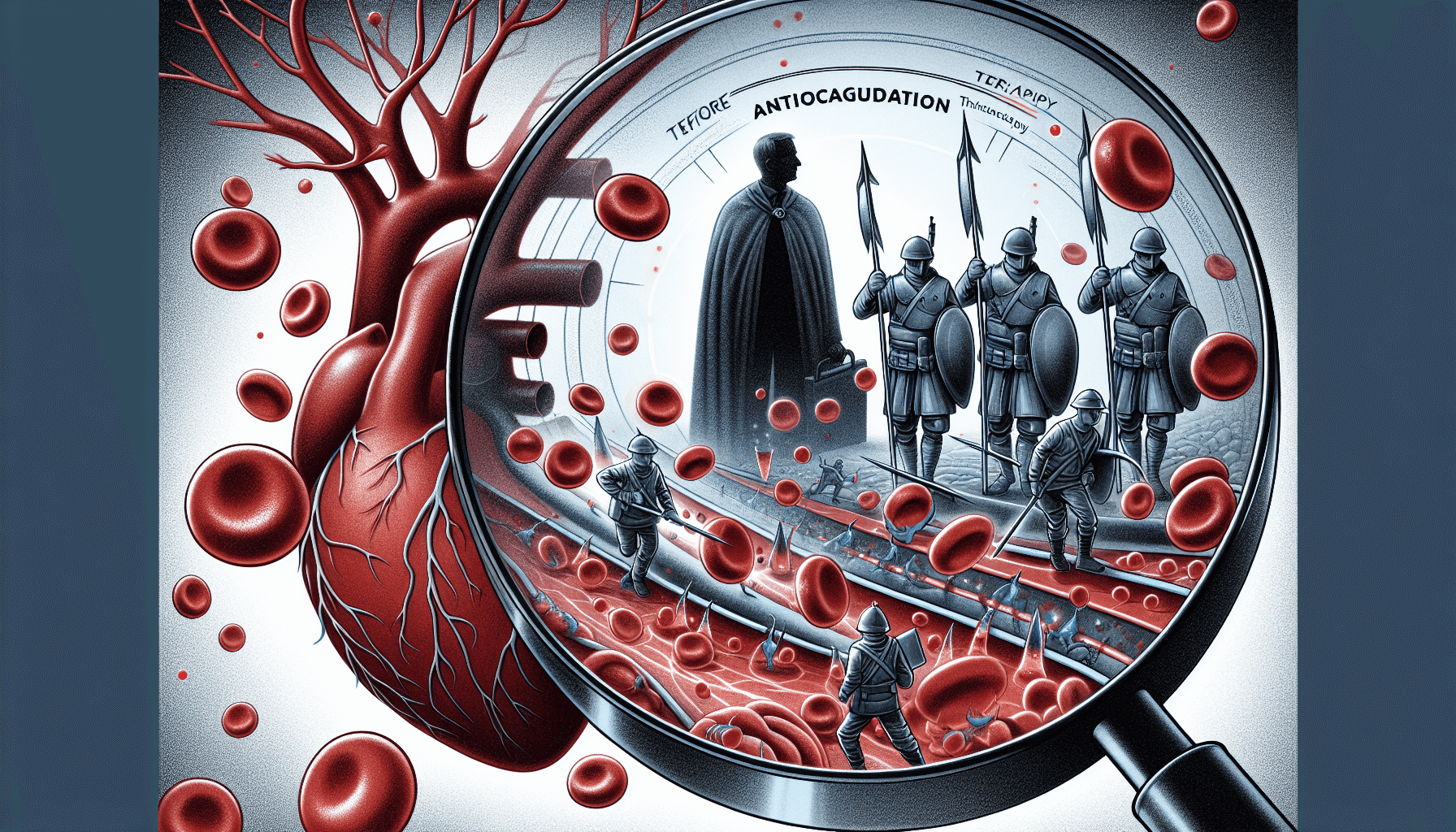
To navigate the post-cardioversion landscape safely, patients often rely on the protection of blood thinning medications. Anticoagulants such as warfarin, apixaban, or rivaroxaban form an integral part of the post-procedure protocol, prescribed for a minimum of three to four weeks both before and after cardioversion to prevent the specter of stroke.
Treatment with blood thinners can extends indefinitely for many, as the risk of future atrial fibrillation episodes and the consequent potential for stroke continues to loom, even after the heart’s rhythm has been corrected.
Maintaining a Heart Healthy Lifestyle
The quest for a sustained normal heart rhythm transcends the bounds of the procedure room and extends into the everyday lives of those who have undergone cardioversion. Embracing a heart-healthy lifestyle is paramount, with dietary choices such as the Mediterranean diet offering a tapestry of heart-friendly foods that can help keep atrial fibrillation at bay. Regular physical activity, including:
- the gentle, meditative movements of yoga
- walking
- swimming
- cycling
has been shown to fortify the heart against the recurrence of arrhythmias, cultivating a rhythm as steady as the flow of breath.
This holistic approach, paired with a positive outlook and effective stress management, can weave a protective shield around the heart, reducing the incidence of atrial fibrillation and fostering a rhythm that resonates with vibrancy and health.
Addressing Potential Complications and Risks
The journey through cardioversion procedure, though often smooth, can traverse through territories of potential complications and risks. The high-energy shock that brings the heart back to rhythm can, in rare instances, pave the way for more dangerous heart rhythms that demand immediate intervention. Life-threatening complications such as thromboembolism and arrhythmias cast a shadow over the post-procedure horizon, underscoring the need for continued vigilance and readiness to act.
Even external factors, such as low potassium levels or digitalis toxicity, can heighten the risk of ventricular tachycardia and fibrillation, adding layers of complexity to the management of patients post-cardioversion.
Managing Skin Burns
In the aftermath of cardioversion, patients may encounter the minor yet discomforting complication of skin burns. Areas where the electrode pads were placed may exhibit redness or soreness, a testament to the intense energy that coursed through them to reset the heart’s rhythm. To mitigate this, clinicians take preventive measures, such as the use of soft electrode pads and shaving the skin for proper adhesion, striving to minimize the risk of skin burns and ensure patient comfort.
These strategies represent the careful balancing act between delivering a lifesaving shock and preserving the integrity of the skin, a reflection of the meticulous care that permeates the cardioversion process.
Dealing with Arrhythmias
Post-cardioversion, the heart’s rhythm is closely monitored to detect any arrhythmias that may emerge as the heart recalibrates to its new tempo. Should an irregular rhythm surface, the response is tailored to the specific disturbance, with bradyarrhythmias potentially requiring temporary pacing if symptomatic, and tachyarrhythmias possibly needing antiarrhythmic drugs or a repeat cardioversion.
This proactive management of post-procedure arrhythmias ensures that any abnormal rhythms are addressed swiftly, maintaining the patient’s safety and heart health.
Summary
As our exploration of cardioversion for atrial fibrillation concludes, we stand at the threshold of renewed hope for those afflicted with this heart rhythm disorder. The journey, from pre-procedure risk assessment to the strategic use of waveforms and medications, and through to the vigilant post-procedure care, underscores the multifaceted approach required to restore and maintain a normal heart rhythm. Armed with this knowledge, patients and healthcare providers alike can navigate the complexities of AFib with confidence, ensuring that the heart’s melody plays on in harmonious rhythm.
Frequently Asked Questions
What exactly is cardioversion and how does it correct atrial fibrillation?
Cardioversion is a procedure that corrects arrhythmias by using controlled electric shock or medications to reset the heart’s rhythm to its normal state, thus correcting atrial fibrillation.
Is cardioversion a safe procedure and what are the risks?
Yes, cardioversion is a generally safe procedure with high success rates, but there are potential risks such as skin burns, dangerous heart rhythms, and thromboembolism, which are carefully managed by healthcare professionals.
How long does the effect of cardioversion last, and can AFib recur?
The effect of cardioversion can last for a significant amount of time, but there is a risk of AFib recurrence, especially within the first few days post-procedure. Long-term success depends on factors such as heart health and adherence to lifestyle changes and medications.
Are there any lifestyle changes recommended after undergoing cardioversion?
After undergoing cardioversion, it’s important to maintain a heart-healthy lifestyle by following a balanced diet, engaging in regular exercise, managing stress, and avoiding excessive alcohol and tobacco use. By making these lifestyle changes, you can support the success of the procedure and promote overall heart health.
What role do antiarrhythmic medications play in the cardioversion process?
Antiarrhythmic medications play a crucial role in the cardioversion process by stabilizing the heart’s electrical activity, increasing the success of the procedure and preventing immediate recurrence of AFib.
The Best Atrial Fibrillation Book
Your Complete Guide To AFib: The Essential Manual For Every Patient With Atrial Fibrillation
$15.95 (as of June 1, 2025 14:05 GMT -06:00 - More infoProduct prices and availability are accurate as of the date/time indicated and are subject to change. Any price and availability information displayed on [relevant Amazon Site(s), as applicable] at the time of purchase will apply to the purchase of this product.) The A to Z guide on everything you need to know about atrial fibrillation. Written by AFib expert Dr. Percy Morales MD. Over 120 pages of essential information on medications, procedures, and lifestyles modifications for AFib. Easy to read for every patient.
Shop AFib Products on Amazon
KardiaMobile 6-Lead Personal EKG Monitor – Six Views of The Heart – Detects AFib and Irregular Arrhythmias – Instant Results in 30 Seconds – Works with Most Smartphones - FSA/HSA Eligible
13% Off
KardiaMobile 1-Lead Personal EKG Monitor – Record EKGs at Home – Detects AFib and Irregular Arrhythmias – Instant Results in 30 Seconds – Easy to Use – Works with Most Smartphones - FSA/HSA Eligible
$79.00 (as of June 1, 2025 14:05 GMT -06:00 - More infoProduct prices and availability are accurate as of the date/time indicated and are subject to change. Any price and availability information displayed on [relevant Amazon Site(s), as applicable] at the time of purchase will apply to the purchase of this product.)
Apple Watch Series 9 [GPS 41mm] Smartwatch with Storm Blue Aluminum Case with Silver Sport Band M/L. Fitness Tracker, Blood Oxygen & ECG Apps, Always-On Retina Display
(as of June 1, 2025 07:09 GMT -06:00 - More infoProduct prices and availability are accurate as of the date/time indicated and are subject to change. Any price and availability information displayed on [relevant Amazon Site(s), as applicable] at the time of purchase will apply to the purchase of this product.)
Fitbit Sense 2 Advanced Health and Fitness Smartwatch with Tools to Manage Stress and Sleep, ECG App, SpO2, 24/7 Heart Rate and GPS, Shadow Grey/Graphite, One Size (S & L Bands Included)
20% Off
OMRON 2-in-1 Upper Arm Blood Pressure Monitor & 1-Lead EKG Monitor - Clinically Validated Blood Pressure Arm Cuff & Machine - Use OMRON Connect App
17% Off
Samsung Galaxy Watch 6 44mm Bluetooth Smartwatch, Fitness Tracker, Personalized HR Zones, Advanced Sleep Coaching, Heart Monitor, BIA Sensor, Health Wellness Insights, Big Screen, US Version, Graphite
52% Off $329.99 (as of June 1, 2025 06:02 GMT -06:00 - More infoProduct prices and availability are accurate as of the date/time indicated and are subject to change. Any price and availability information displayed on [relevant Amazon Site(s), as applicable] at the time of purchase will apply to the purchase of this product.)
Natural Rhythm Triple Calm Magnesium 150 mg - 120 Capsules – Magnesium Complex Compound Supplement with Magnesium Glycinate, Malate, and Taurate. Calming Blend for Promoting Rest and Relaxation.
$20.77 ($0.17 / Count) (as of June 1, 2025 15:43 GMT -06:00 - More infoProduct prices and availability are accurate as of the date/time indicated and are subject to change. Any price and availability information displayed on [relevant Amazon Site(s), as applicable] at the time of purchase will apply to the purchase of this product.)
Pure Encapsulations Magnesium (Glycinate) - Supplement to Support Stress Relief, Sleep, Heart Health, Nerves, Muscles, and Metabolism* - with Magnesium Glycinate - 180 Capsules
$44.60 ($0.25 / Count) (as of June 1, 2025 07:10 GMT -06:00 - More infoProduct prices and availability are accurate as of the date/time indicated and are subject to change. Any price and availability information displayed on [relevant Amazon Site(s), as applicable] at the time of purchase will apply to the purchase of this product.)
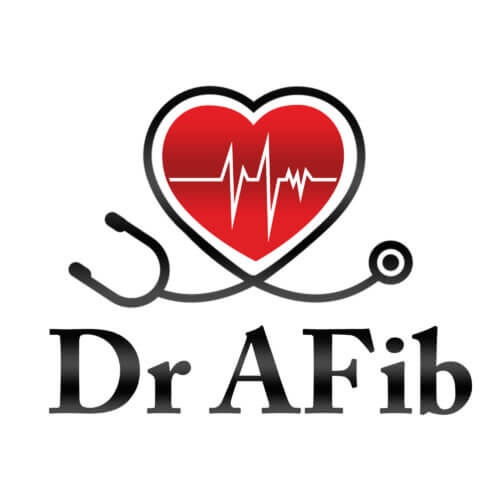














![Apple Watch Series 9 [GPS 41mm] Smartwatch with Storm Blue Aluminum Case with Silver Sport Band M/L. Fitness Tracker, Blood Oxygen & ECG Apps, Always-On Retina Display #1](https://m.media-amazon.com/images/I/311xwtp4mFL._SL100_.jpg)
![Apple Watch Series 9 [GPS 41mm] Smartwatch with Storm Blue Aluminum Case with Silver Sport Band M/L. Fitness Tracker, Blood Oxygen & ECG Apps, Always-On Retina Display #2](https://m.media-amazon.com/images/I/41j+8AaUGsL._SL100_.jpg)
![Apple Watch Series 9 [GPS 41mm] Smartwatch with Storm Blue Aluminum Case with Silver Sport Band M/L. Fitness Tracker, Blood Oxygen & ECG Apps, Always-On Retina Display #3](https://m.media-amazon.com/images/I/41jIyxZitnL._SL100_.jpg)
![Apple Watch Series 9 [GPS 41mm] Smartwatch with Storm Blue Aluminum Case with Silver Sport Band M/L. Fitness Tracker, Blood Oxygen & ECG Apps, Always-On Retina Display #4](https://m.media-amazon.com/images/I/41IpNJERjCL._SL100_.jpg)
![Apple Watch Series 9 [GPS 41mm] Smartwatch with Storm Blue Aluminum Case with Silver Sport Band M/L. Fitness Tracker, Blood Oxygen & ECG Apps, Always-On Retina Display #5](https://m.media-amazon.com/images/I/31o17yhfYpL._SL100_.jpg)





























